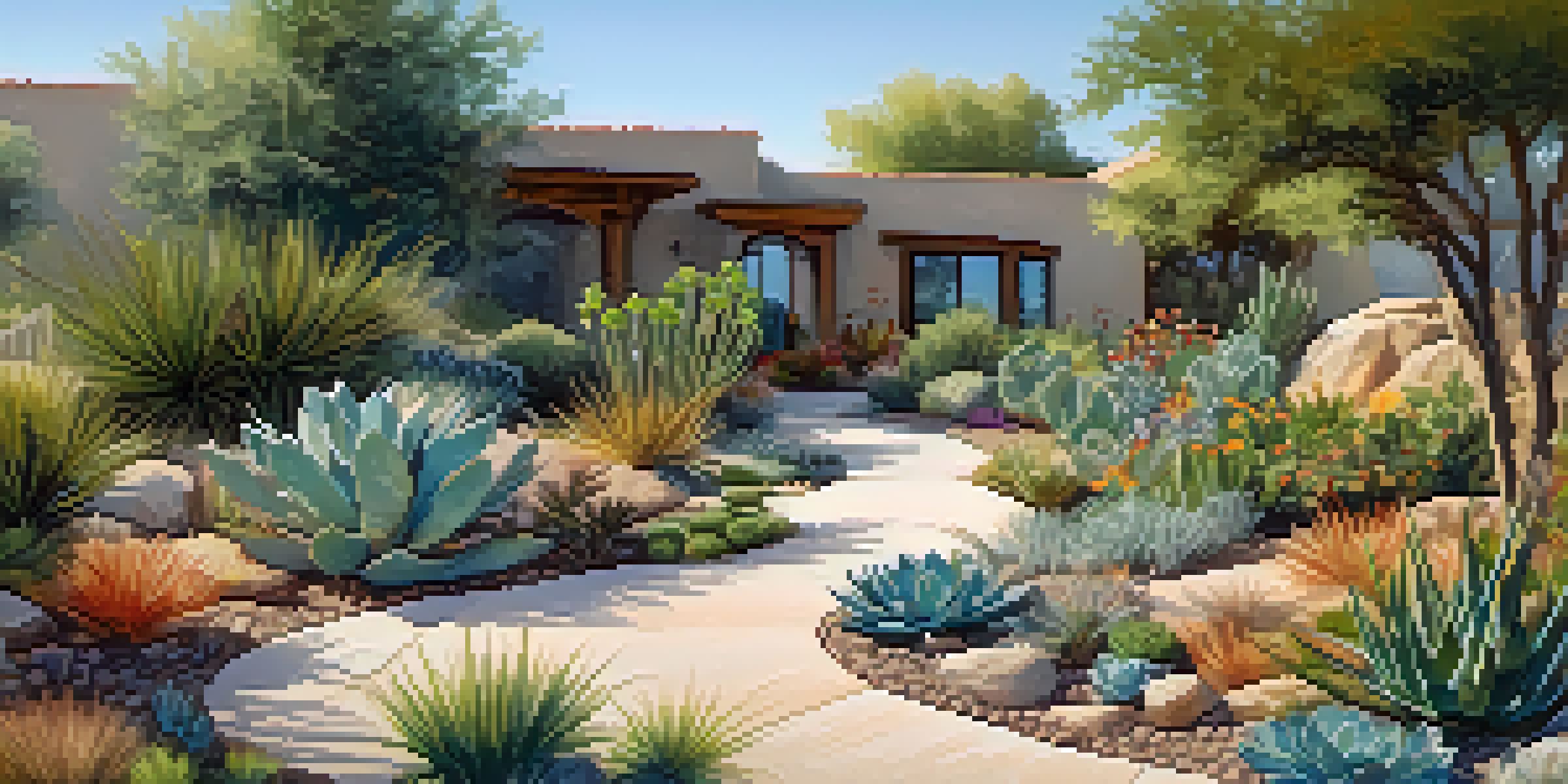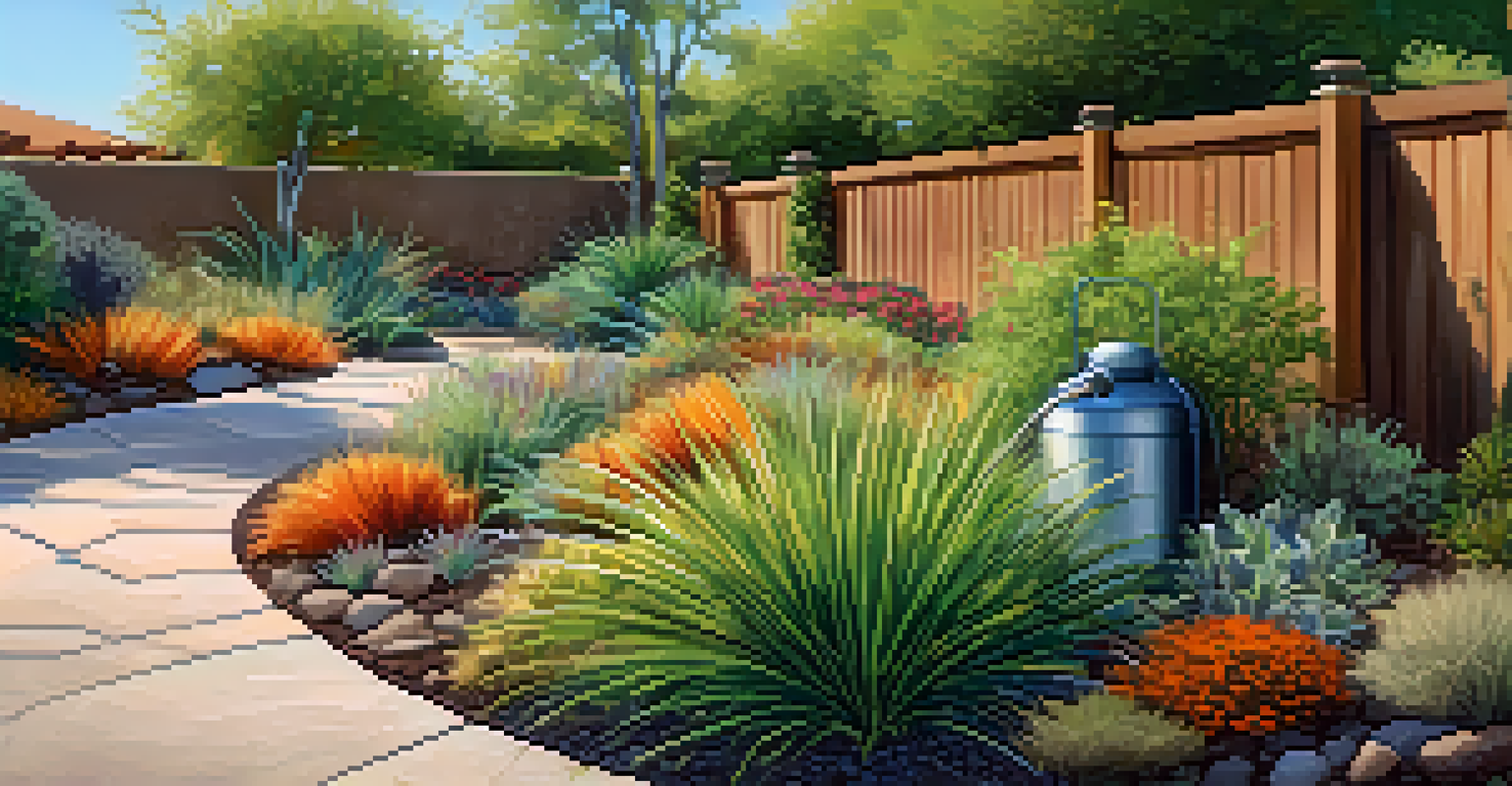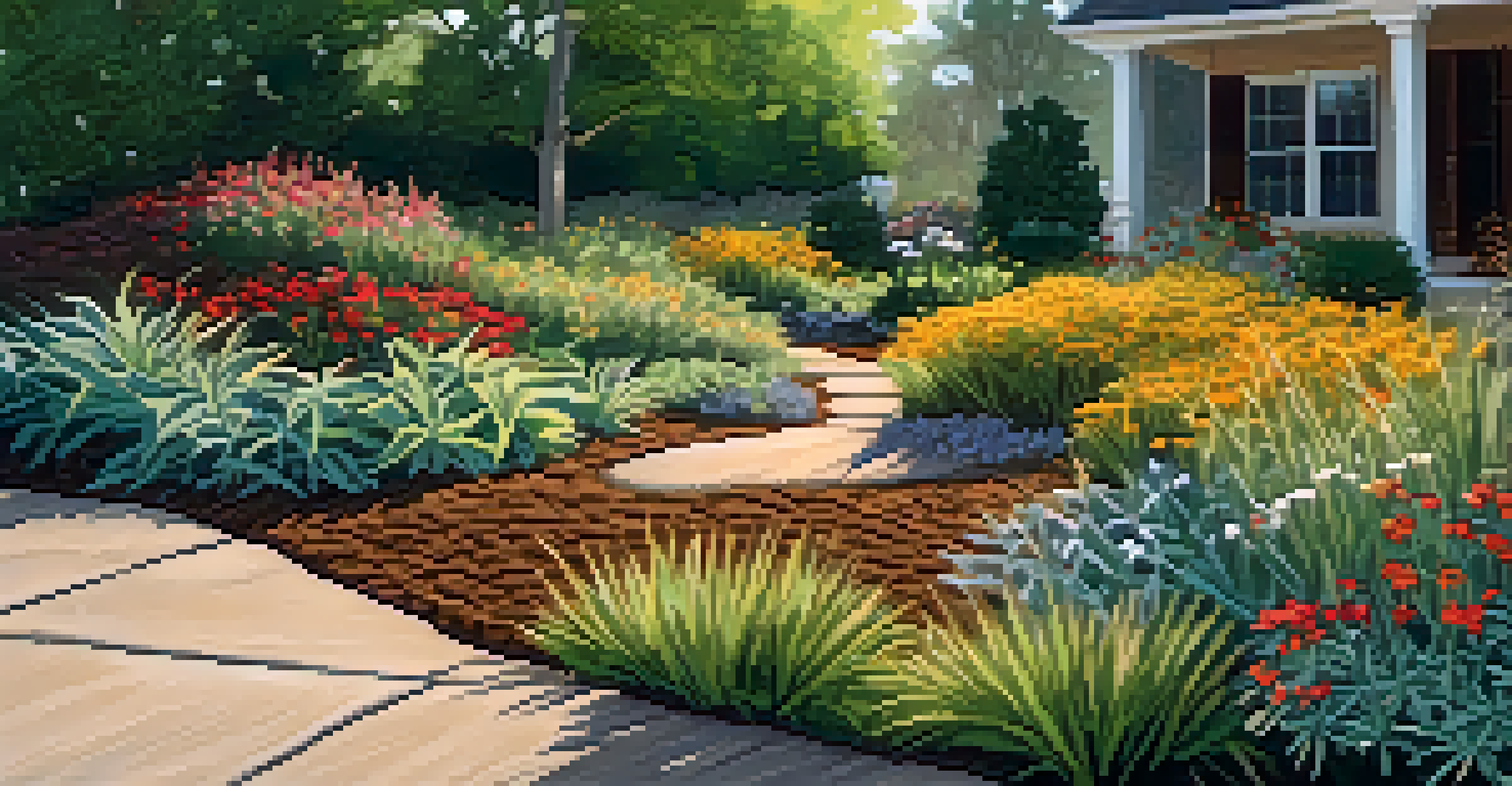The Art of Xeriscaping: Water-Saving Landscaping Tips

Understanding Xeriscaping: What It Is and Why It Matters
Xeriscaping is a landscaping method designed to reduce water usage, especially in arid regions. By selecting drought-resistant plants and employing efficient irrigation techniques, xeriscaping aims to create beautiful gardens that require minimal water. This approach not only conserves precious water resources but also promotes a sustainable ecosystem.
The greatest threat to our planet is the belief that someone else will save it.
Imagine a garden that thrives without constant watering; that's the beauty of xeriscaping. It emphasizes using native plants that are naturally adapted to local climate conditions, making them robust and low-maintenance. This method is increasingly important as climate change intensifies drought conditions in many areas.
Beyond saving water, xeriscaping also fosters biodiversity. By choosing native species, you create habitats for local wildlife, including pollinators like bees and butterflies. So, you’re not just gardening—you’re actively contributing to the environment.
Choosing the Right Plants for Your Xeriscape Garden
Selecting the right plants is crucial in xeriscaping. Opt for drought-resistant varieties such as succulents, ornamental grasses, and native wildflowers. These plants not only survive with minimal water but also add unique textures and colors to your landscape.

A great way to start is by visiting local nurseries and asking about native plants in your region. Many of these plants have evolved to thrive in your specific climate, making them more resilient and adaptable. Additionally, grouping plants with similar water needs can simplify irrigation and maintenance.
Xeriscaping Conserves Water
This landscaping method uses drought-resistant plants and efficient irrigation to significantly reduce water usage.
Consider creating a plant palette that combines different shapes, sizes, and colors. This variety will ensure your garden is visually appealing throughout the seasons while still being water-efficient. A well-planned xeriscape can be both stunning and sustainable.
Creating a Water-Efficient Irrigation System
Even with drought-tolerant plants, a smart irrigation system is essential for maintaining your xeriscape. Drip irrigation is one of the most efficient methods, delivering water directly to the plant roots where it’s needed most. This minimizes evaporation and runoff, ensuring that every drop counts.
Nature does not hurry, yet everything is accomplished.
Rain barrels are another fantastic addition to any xeriscape. They collect and store rainwater, which can be used to irrigate your garden during dry spells. This not only conserves water but also helps reduce your water bill.
Timing is also key when it comes to watering. Early morning or late afternoon is the best time to water your plants, as it reduces evaporation. By being mindful of when and how you water, you can enhance the health of your xeriscape while conserving water.
Maximizing Mulch: The Unsung Hero of Xeriscaping
Mulch is a game-changer in xeriscaping. It acts as a protective layer on top of the soil, helping to retain moisture, suppress weeds, and regulate soil temperature. Using organic mulch, like wood chips or straw, not only provides these benefits but also enriches the soil as it decomposes.
When applying mulch, aim for a thickness of about 2 to 4 inches. This depth is effective at conserving moisture while allowing water to penetrate to the roots. Plus, it creates a neat, finished look for your garden beds.
Biodiversity and Habitat Support
By selecting native plants, xeriscaping not only enhances garden aesthetics but also fosters habitats for local wildlife.
Don’t forget to replenish your mulch regularly. Over time, it breaks down and loses its effectiveness, so a little upkeep will go a long way in maintaining your xeriscape’s health and beauty.
Design Principles for an Aesthetic Xeriscape
Creating an aesthetically pleasing xeriscape involves thoughtful design. Start by considering the layout of your garden: use curves and natural shapes to mimic the flow of nature. This softens the appearance and can make your garden feel more inviting.
Incorporating hardscaping elements like rocks, pathways, and patios can add visual interest and reduce the area needing plants. These features not only enhance the beauty of your garden but also create functional spaces for relaxation and entertainment.
Remember, color is your ally! Use a mix of flowering plants and foliage to create a vibrant palette. With careful planning, you can achieve a xeriscape that is not only water-efficient but also a stunning focal point in your yard.
Maintaining Your Xeriscape: Best Practices
Once your xeriscape is established, maintenance is key to keeping it thriving. Regularly check for weeds, as they compete for resources and can hinder your plants' growth. A little weeding goes a long way in maintaining the health of your garden.
Additionally, be mindful of pest management. Natural pest control methods, like introducing beneficial insects or using organic sprays, can help keep your garden healthy without harming the environment. This approach aligns with the sustainable ethos of xeriscaping.
Economic Benefits of Xeriscaping
Implementing xeriscaping can lower water bills and maintenance costs while potentially increasing property value.
Lastly, adapt your maintenance practices based on the seasons. During peak growth times, your plants may need a bit more attention, while in cooler months, you can ease up. By staying attuned to your garden's needs, you can enjoy a flourishing xeriscape year-round.
The Environmental and Economic Benefits of Xeriscaping
Xeriscaping offers a multitude of benefits, both environmental and economic. By reducing water usage, you contribute to conservation efforts, helping preserve local ecosystems. This is particularly important in areas prone to drought, where every drop of water counts.
From an economic perspective, xeriscaping can significantly lower your water bills. With proper planning and plant selection, you’ll find that your landscape requires much less water than traditional gardens. This not only saves money but also reduces maintenance costs over time.

Moreover, a well-designed xeriscape can increase your property’s value. Homebuyers are increasingly drawn to sustainable landscaping options, making xeriscaping a smart investment. In the long run, it’s a win-win for your wallet and the planet.